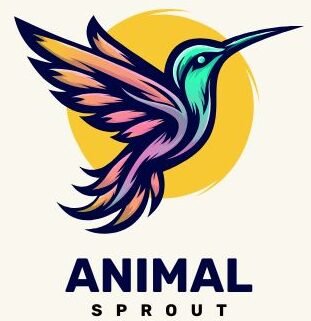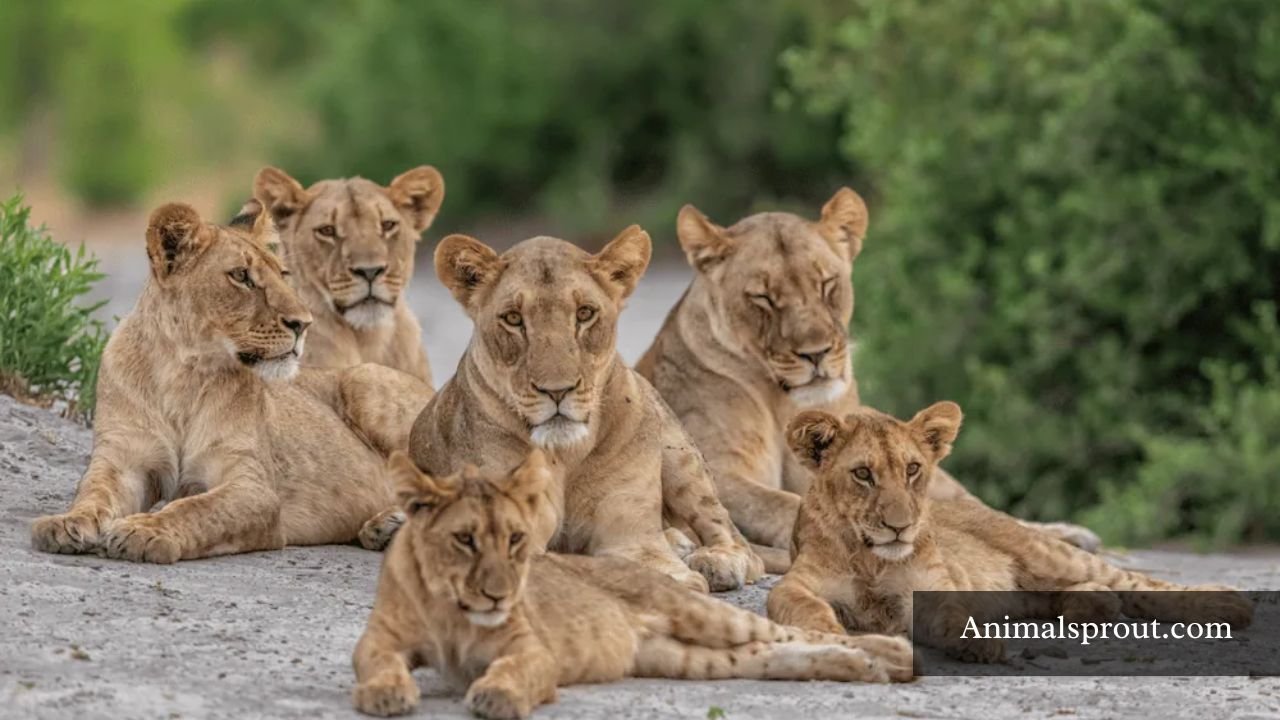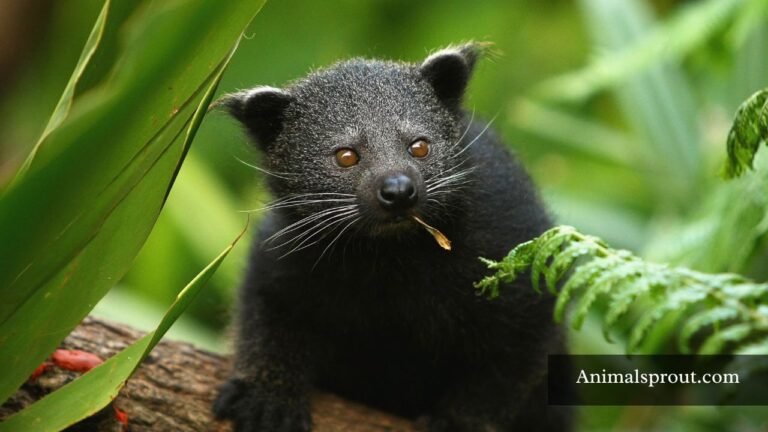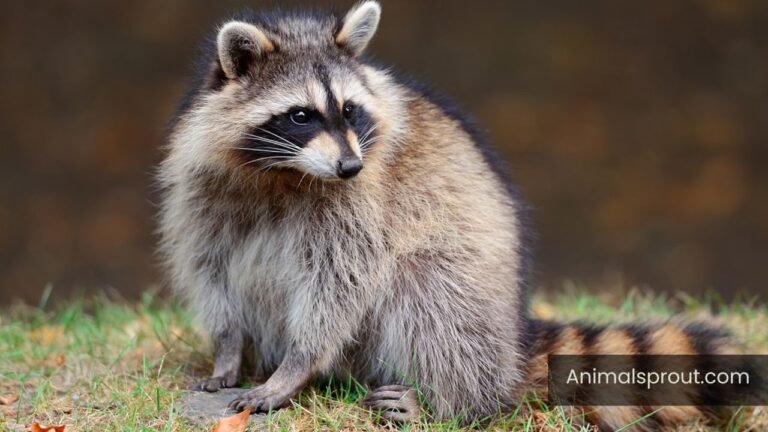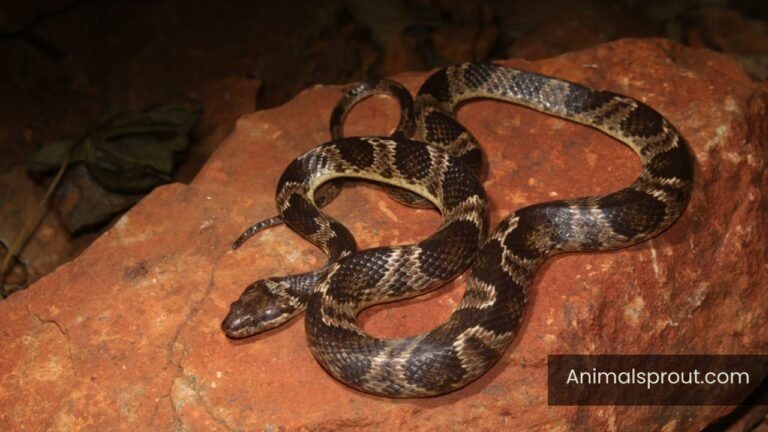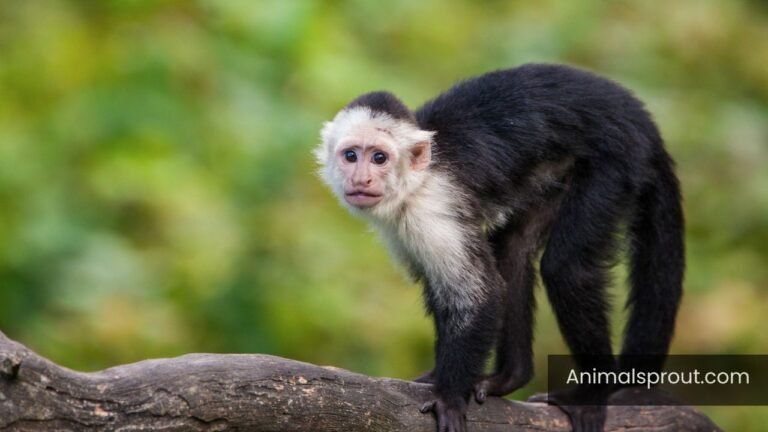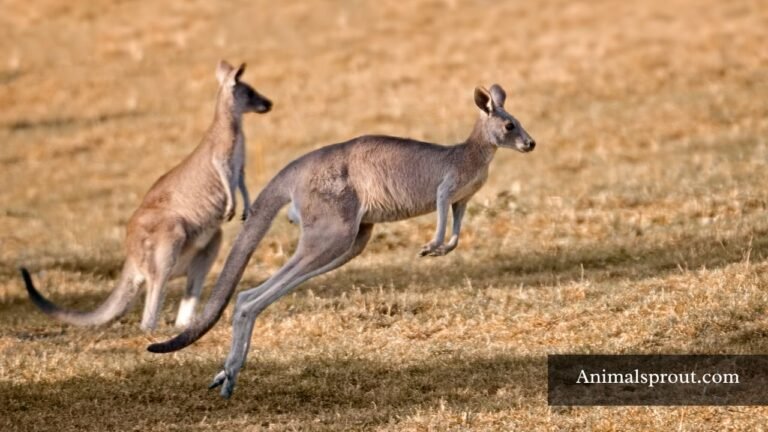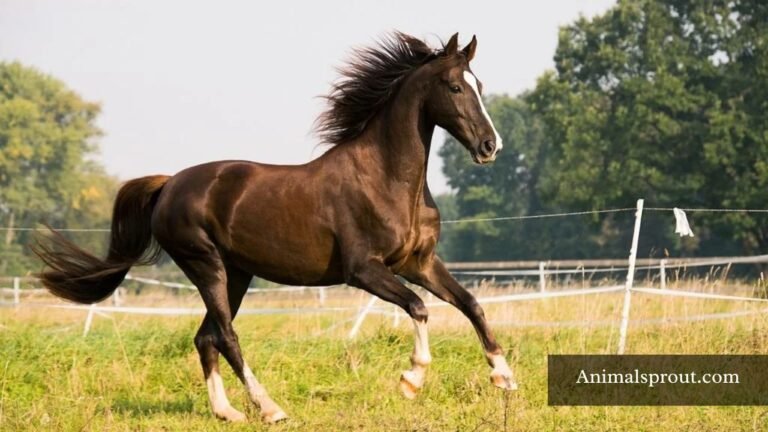Explore Top 35 Animals That Live in Groups (With Pictures)
From the majestic herds of elephants to the bustling colonies of ants, animals that live in groups showcase remarkable teamwork and social structures. This article will delve into the reasons behind their collective behavior and how it influences their survival and success in the wild. By the end, you’ll gain insight into the importance of social living in the animal kingdom and what we can learn from these fascinating creatures.
List Of Animals That Live in Groups
Below is the list of animals that live in groups:
| Number of Animals | Names of Animals That Live in Groups |
| 1 | Elephants |
| 2 | Parrots |
| 3 | Crows |
| 4 | Lions |
| 5 | Spotted Hyenas |
| 6 | Dolphins |
| 7 | Wolves |
| 8 | Guinea Baboon |
| 9 | Buffaloes |
| 10 | Sea Otters |
| 11 | Wild hogs |
| 12 | Ants |
| 13 | Meerkat |
| 14 | Zebra |
| 15 | Raccoons |
| 16 | Geese |
| 17 | Chimpanzees |
| 18 | Sparrows |
| 19 | Starlings |
| 20 | Bats |
| 21 | Flamingos |
| 22 | Honeybees |
| 23 | Camels |
| 24 | Red Fox |
| 25 | Gorillas |
| 26 | Sardines |
| 27 | American Alligator |
| 28 | Jellyfish |
| 29 | Hippopotamuses |
| 30 | Killer whales |
| 31 | Penguins |
| 32 | Rats |
| 33 | Giraffes |
| 34 | Deer |
| 35 | Prairie dogs |
Elephants
Class: Mammalia
Diet: Herbivore
Elephants are remarkable examples of social intelligence, forming intricate family units led by matriarchs — typically the oldest and most experienced females. These herds can consist of anywhere from a few individuals to over a dozen, creating a tight-knit community that thrives on cooperation and communication. The bonds among family members are profound; they engage in activities such as grooming and playing, which not only strengthen their relationships but also enhance their overall well-being. This social structure is essential for survival, as the matriarch’s knowledge of water sources and feeding grounds is crucial during times of drought or scarcity.
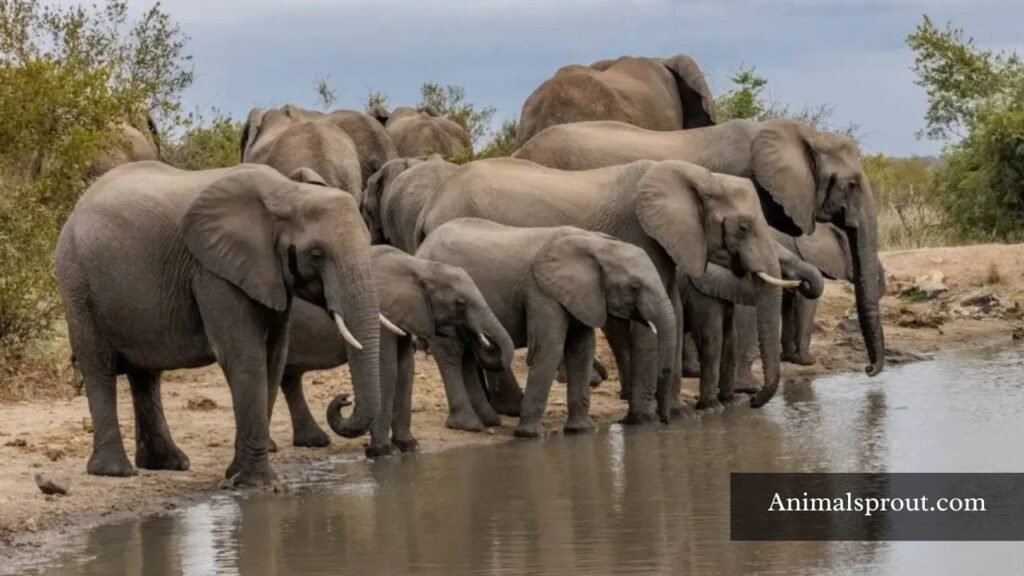
Interestingly, elephants also exhibit behaviors that suggest a deep emotional capacity, including mourning rituals when a member of the herd passes away. They have been observed visiting the bones of deceased companions, gently touching them with their trunks — a poignant display of empathy and remembrance. Furthermore, these majestic creatures communicate over long distances using low-frequency sounds known as infrasound, allowing them to coordinate movements and alert each other to potential dangers.
Parrots
Scientific Name: Psittaciformes
Class: Aves
Diet: Herbivore
Parrots are not just vibrant, intelligent creatures; they are also deeply social animals that thrive in groups. In the wild, many parrot species form flocks that can range from a handful to hundreds of individuals, showcasing a fascinating dynamic of cooperation and communication. These flocks serve multiple purposes: they offer protection from predators, enhance foraging efficiency, and provide a rich social environment for learning and bonding. The intricate vocalizations of parrots play a crucial role in maintaining group cohesion, as they use calls and songs to communicate their whereabouts and strengthen social ties.
Within these flocks, hierarchies often emerge, with dominant individuals leading the way during foraging or flight. This social structure not only ensures survival but also fosters complex relationships that can last a lifetime. Observing these interactions provides insight into their emotional depth — parrots display empathy and even engage in playful behavior, reinforcing their bonds.
Crows
Scientific Name: Corvus brachyrhynchos
Class: Aves
Diet: Omnivore
Crows are remarkable examples of social intelligence, often forming tight-knit communities that can range from small family units to larger flocks of hundreds. These birds engage in complex social behaviors, including cooperative breeding and even communal roosting, where they gather in large numbers at night for safety and warmth. Observing a murmuration of crows is a mesmerizing experience, as they effortlessly coordinate their movements, showcasing their ability to communicate and synchronize with one another.
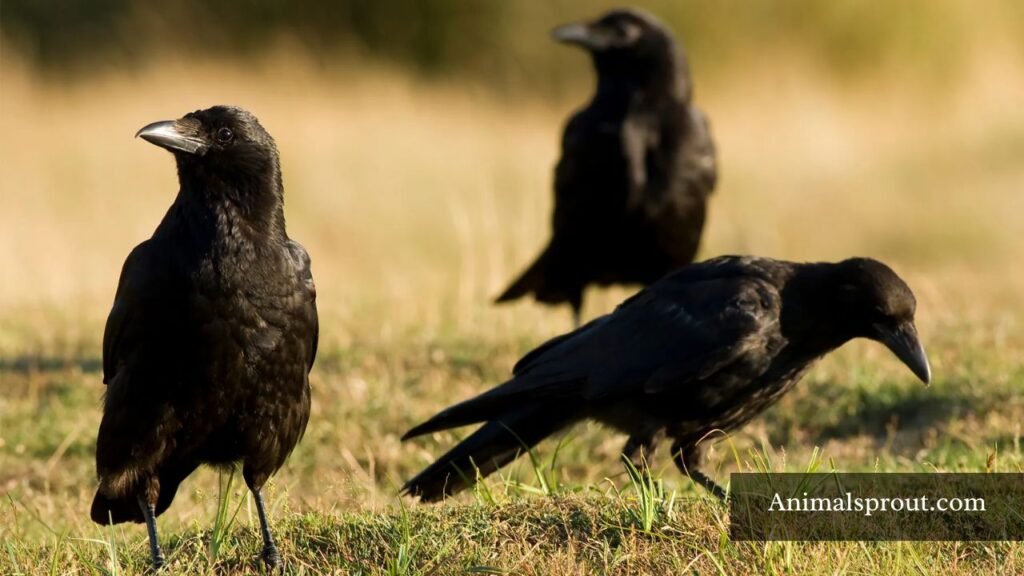
Interestingly, crows have been observed engaging in what can only be described as social play. They partake in games of catch with objects, chase each other through the air, and even slide down snow-covered rooftops for fun. This playful behavior not only strengthens social bonds but also serves as a vital part of their learning process, teaching younger crows essential survival skills. Their ability to recognize individual faces and remember past interactions further emphasizes the depth of their social networks, revealing a level of intelligence that challenges our traditional views on avian behavior. In a world often dominated by solitary species, crows remind us of the power and complexity of community among animals.
Lions
Scientific Name: Panthera leo
Class: Mammalia
Diet: Carnivore
Lions, often dubbed the “kings of the jungle,” showcase a unique social structure that sets them apart from most other big cats. Living in prides — typically consisting of several related females, their cubs, and a small number of males — these majestic creatures thrive on collaboration. This social dynamic allows them to hunt more effectively and protect their territory against rival prides. The females, who do the majority of the hunting, work in unison to take down larger prey, showcasing an impressive level of teamwork that speaks to their evolutionary success.
What’s particularly fascinating is the role of the male lions within the pride. While they may seem like aloof guardians, their presence is crucial for maintaining order and protecting the young from threats, including rival males looking to take over the pride. When a new male takes control, he often eliminates the previous leader’s offspring to ensure that his genes are passed on. This brutal yet strategic behavior underscores the harsh realities of survival in the wild, highlighting not just the strength but also the intricacies of lion social behavior.
Moreover, the bonds formed within a pride extend beyond mere survival; they foster complex social interactions that can be likened to familial ties. Lionesses groom each other and engage in playful activities with their cubs, reinforcing social cohesion and emotional connections. Observing these interactions offers a window into a world where cooperation and empathy are vital for success, challenging our perceptions of wildlife as purely instinct-driven.
Spotted Hyenas
Scientific Name: Crocuta crocuta
Class: Mammalia
Diet: Carnivore / Scavenger
Spotted hyenas, often misunderstood as mere scavengers, are remarkable social animals that thrive in complex group dynamics. Living in clans that can consist of up to 80 individuals, these creatures exhibit a matriarchal structure where females dominate both socially and physically. This unique hierarchy fosters cooperation among clan members, allowing them to hunt efficiently and defend their territory against rivals. Unlike many other carnivores, spotted hyenas rely heavily on teamwork; they often coordinate their hunting strategies, using vocalizations and body language to communicate during the chase.

One of the most fascinating aspects of spotted hyena society is their intricate social bonds. Females typically remain within their natal clans for life, forming strong alliances that enhance their reproductive success. These relationships are not merely transactional; they are nurtured through grooming, playing, and mutual support, which reinforces clan cohesion. The intelligence of spotted hyenas shines through in their problem-solving abilities and adaptability. They are known to adjust their tactics based on the behavior of prey and competitors, showcasing a level of cognitive complexity that rivals some primate species. This combination of social structure and intelligence makes spotted hyenas not just survivors but thriving participants in the African ecosystem.
Dolphins
Scientific Name: Delphinidae
Class: Mammalia
Diet: Carnivore
Dolphins are renowned for their remarkable social structures, often forming pods that can range from a few individuals to several hundred. Within these groups, complex hierarchies emerge, revealing a sophisticated social order. Each dolphin plays a unique role, fostering relationships that go beyond mere survival; they engage in playful interactions and cooperative hunting, showcasing their intelligence and emotional depth. Observing a pod of dolphins working together to herd fish into tight formations offers a glimpse into their strategic thinking and communication skills.
Interestingly, the bonds among dolphins extend beyond familial ties. These marine mammals often engage in social grooming, a behavior that strengthens connections and builds trust within the pod. Researchers have documented instances of dolphins adopting or caring for injured members of their group, demonstrating empathy that resonates with human experiences.
Wolves
Scientific Name: Canis lupus
Class: Mammalia
Diet: Carnivore
Wolves are often celebrated for their fierce independence, yet their strength lies in their social structure. Living in packs typically consisting of 6 to 10 individuals, wolves exhibit a complex hierarchy that fosters cooperation and enhances survival. Each member plays a distinct role, from the alpha pair that leads and makes critical decisions to the beta wolves who assist in maintaining order. This social dynamic not only aids in hunting but also strengthens familial bonds, as wolves are known to nurture their young collectively, teaching them essential skills for survival.
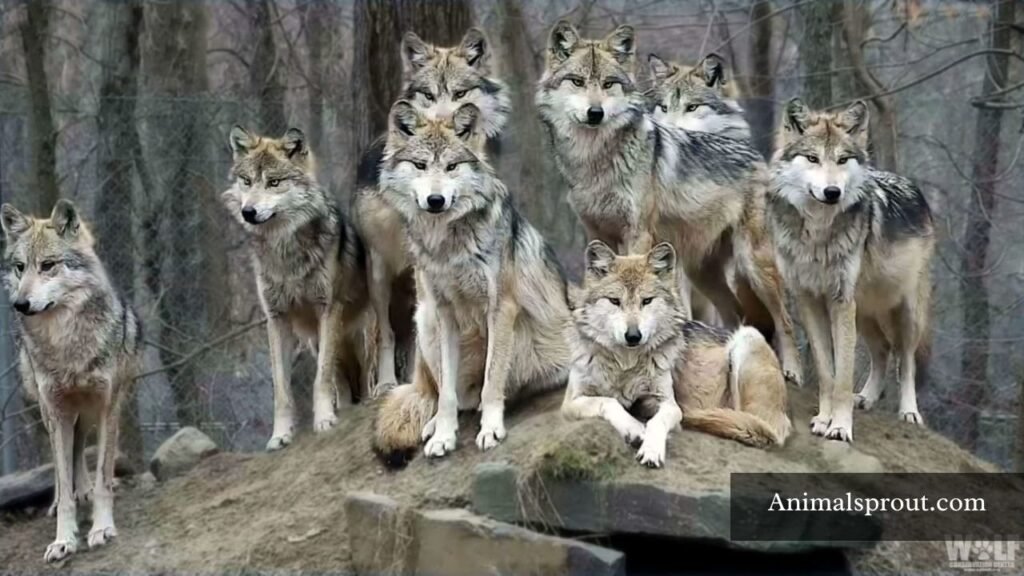
What makes wolf packs particularly fascinating is their communication. Through a sophisticated array of vocalizations, body language, and even scent marking, wolves convey their needs and intentions with remarkable clarity. This interplay fosters teamwork during hunts, allowing them to take down prey much larger than themselves. Moreover, their ability to adapt their social behavior depending on environmental pressures showcases their intelligence; wolves can shift from cooperative hunting in stable environments to more solitary behaviors when food is scarce, demonstrating an extraordinary blend of instinct and adaptability.
Guinea Baboon
Scientific Name: Papio papio
Class: Mammalia
Diet: Omnivore
Guinea baboons are fascinating creatures that exemplify the complexities of social living among animals. These primates thrive in large troops, often consisting of 20 to 100 individuals, which fosters a rich tapestry of social interactions. Within these groups, hierarchy plays a crucial role; dominant males assert their status through displays and behaviors that maintain order and cohesion. However, it’s not just the males who hold sway — females, particularly mothers, wield considerable influence, as their nurturing and protective instincts shape the troop’s dynamics and survival strategies.
What truly sets Guinea baboons apart is their remarkable adaptability and intelligence in group settings. They demonstrate intricate communication skills, using a range of vocalizations and body language to convey warnings, share food, or signal readiness to mate. This ability to work together has profound implications for their survival; by foraging in groups, they can access resources more efficiently while also benefiting from collective vigilance against predators.
Buffaloes
Scientific Name: Syncerus caffer
Class: Mammalia
Diet: Herbivore
Buffaloes, often found roaming the vast grasslands of Africa and North America, are remarkable creatures that exemplify the power of social living. These majestic animals thrive in herds that can number in the hundreds, fostering a strong sense of community that is essential for their survival. Within these groups, buffaloes engage in complex social interactions, from grooming one another to forming protective circles around calves when threats loom nearby. This cooperative behavior not only enhances their defense against predators but also strengthens their bonds, creating a network of support that is vital for raising young.
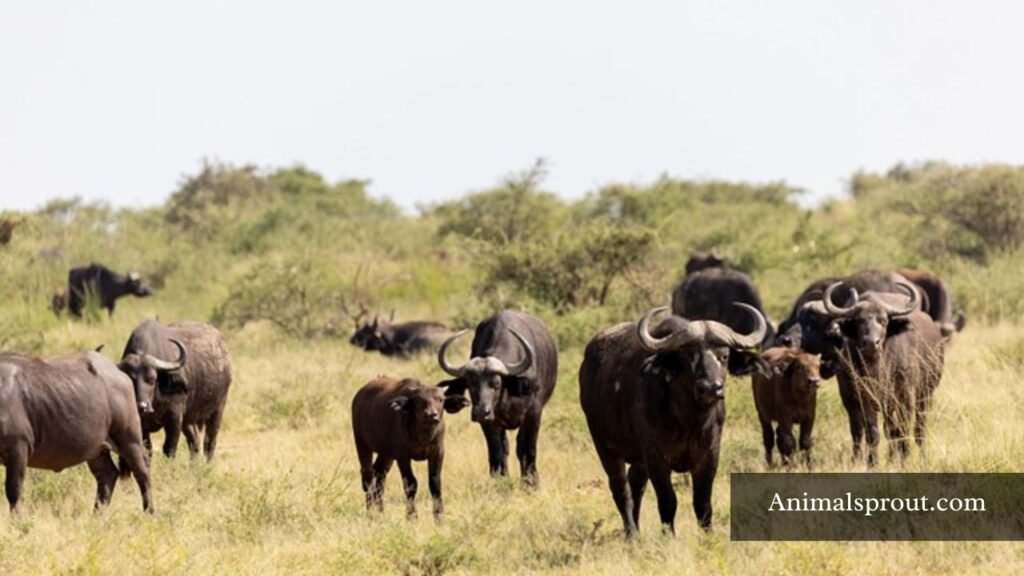
What’s particularly fascinating is how buffalo herds exhibit a remarkable level of communication and teamwork. When foraging, they demonstrate a collective intelligence that allows them to efficiently find food sources while minimizing risks. The older, more experienced members often lead the herd to safer grazing areas, showcasing their role as guardians of knowledge passed through generations.
Sea Otters
Scientific Name: Enhydra lutris
Class: Mammalia
Diet: Carnivore
Sea otters are not just adorable; they are social creatures that thrive in groups called rafts. These rafts can range from a handful of otters to over 100 individuals, all floating together in a remarkable display of community. What’s fascinating is how they use their collective strength to fend off predators like sharks and orcas. When danger approaches, these clever critters hold paws to stay connected, forming a floating chain that keeps them safe while they rest.
Beyond mere survival, social bonding among sea otters plays a crucial role in their everyday lives. They engage in playful behaviors, such as sliding down kelp beds or chasing each other through the water, which fosters strong relationships within the group. Interestingly, sea otters also exhibit tool use, often using rocks to crack open shellfish. This skill is enhanced when learned and shared within their social circles, highlighting how group dynamics can influence individual learning and adaptability.
Wild hogs
Scientific Name: Sus scrofa
Class: Mammalia
Diet: Omnivore
Wild hogs, often seen as solitary foragers, actually thrive in dynamic social structures known as sounders. These groups, typically composed of females and their young, are a fascinating testament to the complexity of animal behavior. Within a sounder, wild hogs exhibit a range of social interactions, from playful antics among piglets to the protective instincts of matriarchs ensuring the safety of their kin. This close-knit community not only enhances their survival rates but also fosters a rich social environment where individuals can learn from one another, enhancing foraging efficiency and evading predators.
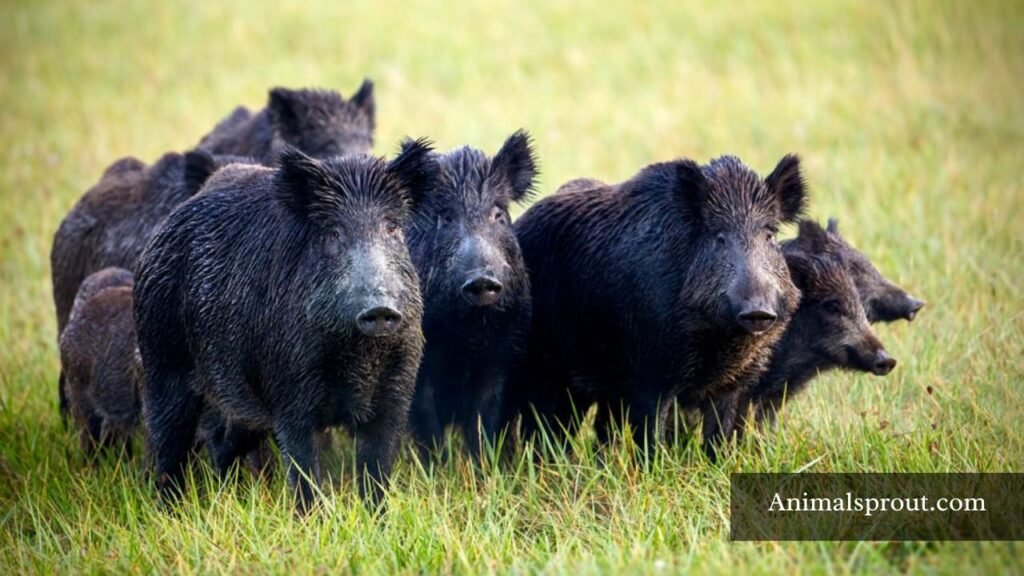
The hierarchy within a sounder is equally intriguing; dominant females often lead the group, guiding their young through various terrains and teaching them essential survival skills. Interestingly, wild hogs communicate with each other through a series of grunts, squeals, and body language, creating a complex social network that rivals many more traditionally social species. As they navigate their environments together, wild hogs demonstrate an adaptability that showcases the power of collective behavior in the wild, proving that even animals often perceived as lone scavengers possess a vibrant social life worth exploring.
Ants
Scientific Name: Formicidae
Class: Insecta
Diet: Omnivore
Ants are the quintessential example of social living in the animal kingdom, showcasing a level of organization and cooperation that often leaves researchers in awe. Within their colonies, which can number in the millions, ants exhibit a division of labor that is meticulously structured. Each ant has a specific role, whether it’s foraging for food, caring for the queen’s offspring, or defending the nest. This specialization allows them to work efficiently, turning what might seem like chaotic activity into a well-orchestrated ballet of movement.
What’s particularly fascinating is how ants communicate and make decisions as a collective. Through pheromones — chemical signals — they convey information about food sources, danger, or the need for more workers in a specific task. This decentralized decision-making process leads to remarkable outcomes; for instance, when faced with obstacles, ants can dynamically reroute their paths to find new routes to food, showcasing their adaptability.
Meerkat
Scientific Name: Suricata suricatta
Class: Mammalia
Diet: Omnivore
Meerkats, often seen standing sentinel in the sun-drenched deserts of Southern Africa, are a fascinating example of social structure in the animal kingdom. Living in groups called mobs, these small mammals display a remarkable level of cooperation and communication. Each meerkat has a role, from foragers to babysitters, ensuring the survival of the entire group. Their intricate system of vocalizations and body language allows them to alert one another to danger, showcasing a sophisticated form of social interaction that rivals some primate communities.
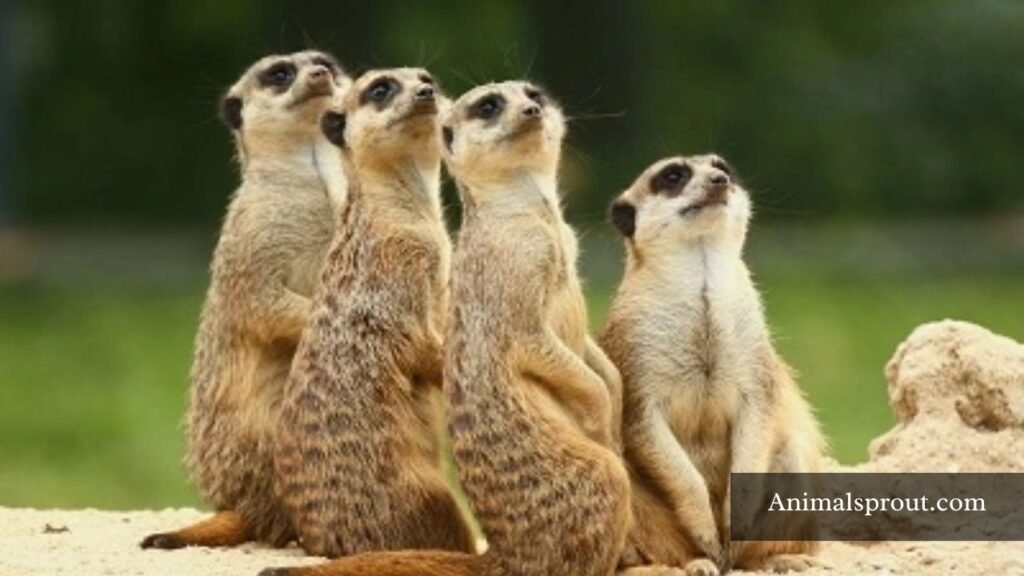
What’s particularly captivating is their nurturing behavior. While some members scout for food or keep watch for predators, others take on the responsibility of caring for the young. This communal approach not only strengthens social bonds but also enhances the survival chances of the offspring. Interestingly, meerkats exhibit a unique form of altruism; older siblings often help in rearing their younger counterparts, which can seem counterintuitive in the harsh realities of their environment. This blend of cooperation and selflessness sets meerkats apart and offers a glimpse into the complex dynamics of animal societies.
Zebra
Scientific Name: Equus quagga
Class: Mammalia
Diet: Herbivore
Zebras are the ultimate socialites of the savannah, thriving in herds that can number from a few dozen to several hundred. Their group dynamics are fascinating; these animals rely on strong social bonds for protection against predators and to maintain their well-being. Each zebra has a unique stripe pattern, which not only serves as a form of camouflage but also helps them recognize one another in the chaos of their bustling community.
Within the herd, zebras display a remarkable level of cooperation and communication. They engage in grooming rituals, reinforcing social ties and reducing stress among members. Interestingly, they often form alliances with other species, like wildebeests and gazelles, creating a diverse alliance that enhances their chances of survival.
Raccoons
Scientific Name: Procyon lotor
Class: Mammalia
Diet: Omnivore
Raccoons are often seen as solitary scavengers, but in reality, they thrive in social groups known as “gaze” or “nursery” groups. These gatherings can consist of up to a dozen individuals, typically composed of mothers and their young. This cooperative structure allows raccoons to share information about food sources and potential dangers, making them more adept at navigating urban landscapes.
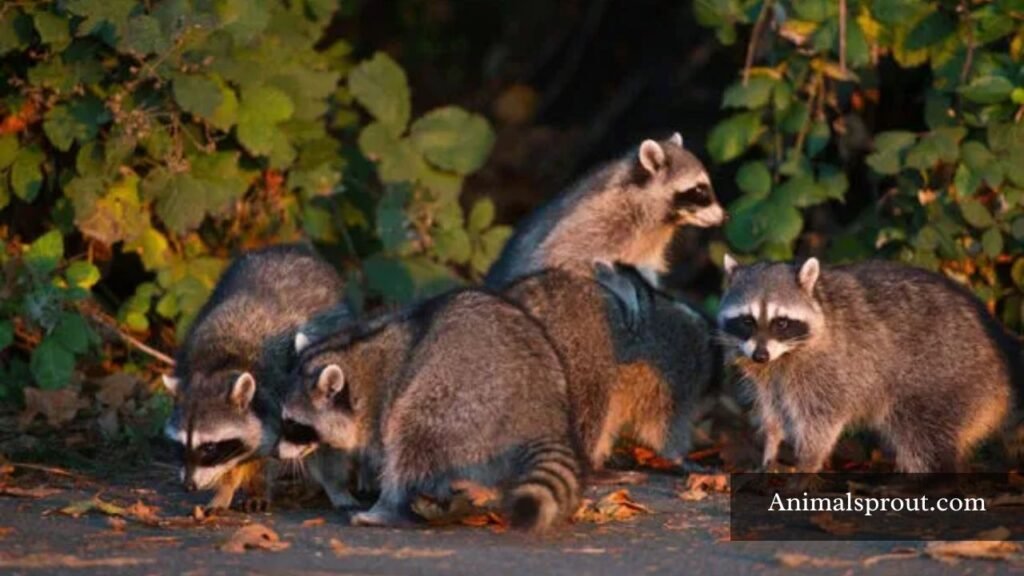
Their social dynamics extend beyond mere survival; raccoons engage in playful interactions that strengthen bonds within the group. These playful bouts not only serve as entertainment but also help young raccoons develop essential skills for foraging and self-defense.
Geese
Class: Aves
Diet: Herbivore
Geese are remarkable social animals, often seen gliding across lakes or honking in formation as they migrate. Their strong sense of community is not just for protection; it’s a crucial survival strategy. By flying in a V-formation, they conserve energy, allowing the lead bird to take the brunt of the wind resistance while others benefit from the uplift created by their wings. This teamwork extends beyond migration; geese are known to engage in cooperative parenting, where multiple adults care for the young, ensuring higher survival rates.
Moreover, geese exhibit fascinating social behaviors that illustrate their intelligence and emotional depth. They form lifelong bonds with mates and display strong loyalty to their families, often returning to the same nesting sites year after year. When threatened, a flock will unite in a coordinated defense, using loud calls to deter predators and protect their young.
Chimpanzees
Scientific Name: Pan troglodytes
Class: Mammalia
Diet: Omnivore
Chimpanzees are remarkable social animals, known for their complex group dynamics and intricate relationships. Living in communities that can range from 20 to over 100 individuals, they exhibit a fascinating blend of cooperation and competition. These groups, often referred to as communities, are not just about survival; they are arenas for social learning and cultural transmission. Young chimps observe and mimic the behaviors of their elders, acquiring skills that enhance their chances of survival — whether it’s tool use or foraging techniques.
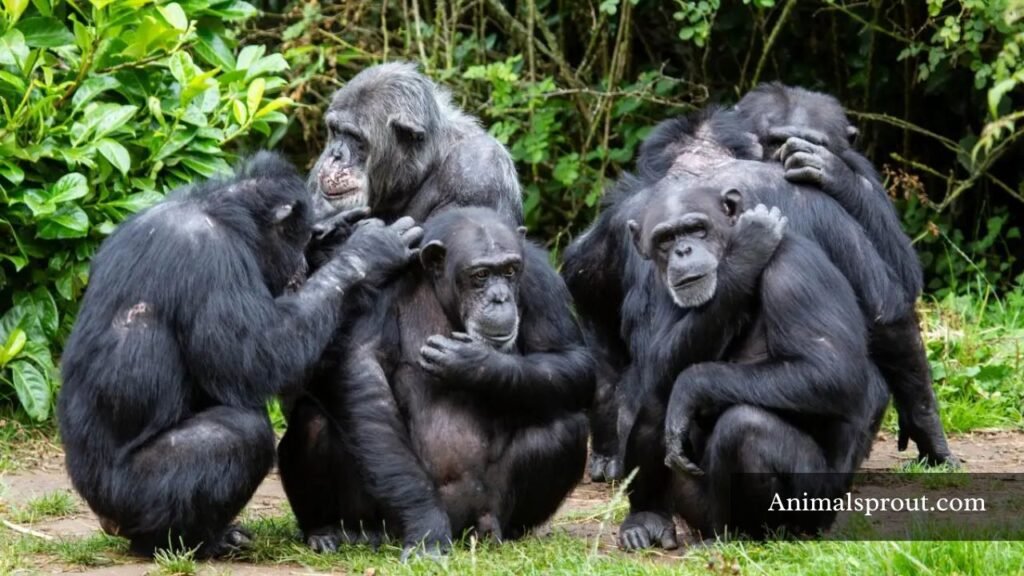
What sets chimpanzees apart is their ability to form bonds that transcend mere kinship. They engage in grooming rituals, which serve as both a hygienic practice and a means to strengthen social ties. This behavior fosters alliances, crucial during times of conflict, where loyal friendships can shift the balance of power within the group. These primates exhibit empathy and emotional depth, displaying behaviors that indicate they understand the feelings of others — such as comforting a distressed companion or sharing food with those in need.
Sparrows
Scientific Name: Passer domesticus
Class: Aves
Diet: Omnivore
Sparrows are the quintessential social butterflies of the avian world, often seen flitting about in flocks that can number in the hundreds. These small birds possess an innate understanding of community, which offers them advantages such as increased foraging efficiency and enhanced protection against predators. When gathered in groups, sparrows engage in a lively symphony of chirps and tweets, creating a vibrant tapestry of sound that is both delightful and functional. This chatter not only strengthens social bonds but also serves as a way to communicate vital information about food sources or potential threats.
Interestingly, sparrows exhibit a fascinating form of social hierarchy within their flocks. Dominance displays, such as puffing up their feathers or engaging in aerial acrobatics, help establish pecking orders that dictate access to resources.
Starlings
Scientific Name: Sturnus vulgaris
Class: Aves
Diet: Omnivore
Starlings are fascinating creatures known for their spectacular aerial displays and intricate social structures. These birds often gather in massive flocks, sometimes numbering in the thousands, creating mesmerizing formations that ripple through the sky. This behavior, known as murmurations, serves multiple purposes: it confuses predators, enhances foraging efficiency, and strengthens social bonds among members of the group. Watching a murmuration unfold is like witnessing a living, breathing tapestry, with each bird responding to its neighbors in a dance of instinct and coordination.
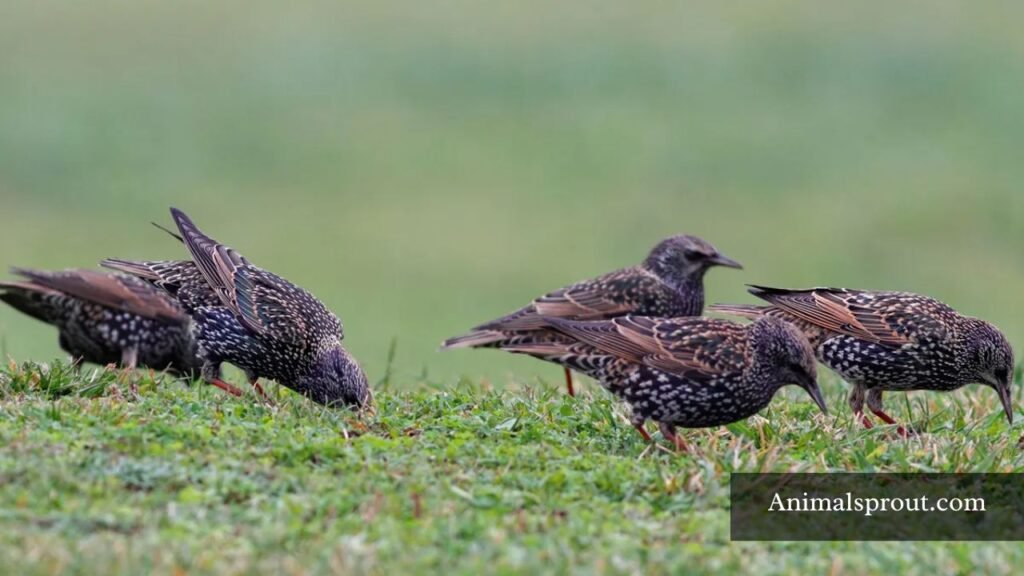
Beyond their stunning flight patterns, starlings exemplify complex communication within their communities. Their vocalizations range from melodious whistles to sharp calls, allowing them to convey warnings, attract mates, and coordinate movements. Interestingly, starlings are also adept mimics, capable of imitating the sounds of other birds and even human-made noises. This adaptability not only showcases their intelligence but also highlights their ability to thrive in diverse environments, from urban areas to rural landscapes.
Bats
Scientific Name: Chiroptera
Class: Mammalia
Diet: Omnivore
Bats are fascinating creatures that exemplify the power of social living. Many species, such as the Brazilian free-tailed bat, thrive in large colonies that can number in the millions. These dense gatherings not only offer protection from predators but also create a unique environment for social interactions and communication. Within the colony, bats use a sophisticated system of echolocation to navigate and locate food, demonstrating an incredible ability to share resources in a bustling community.
What’s particularly intriguing is how social structures within bat colonies can vary significantly between species. Some bats exhibit strong maternal bonds, where females collaborate to care for their young, forming crèches that enhance survival rates. Others engage in complex social behaviors like grooming and vocalizations, which strengthen social ties and help maintain harmony within the group. This social network is not merely a survival tactic; it plays a crucial role in the evolutionary success of bats, showcasing their adaptability and intelligence in the face of environmental challenges.
Flamingos
Scientific Name: Phoenicopterus roseus
Class: Aves
Diet: Omnivore
Flamingos are the epitome of social animals, often found in vibrant colonies that can number in the thousands. Their striking pink feathers and synchronized movements create a breathtaking spectacle, especially during mating displays. But it’s not just about aesthetics; living in large groups offers protection from predators and increases foraging efficiency. When feeding, flamingos use their unique filtering beaks to sift through mud and water, and doing so in numbers maximizes their chances of finding food.
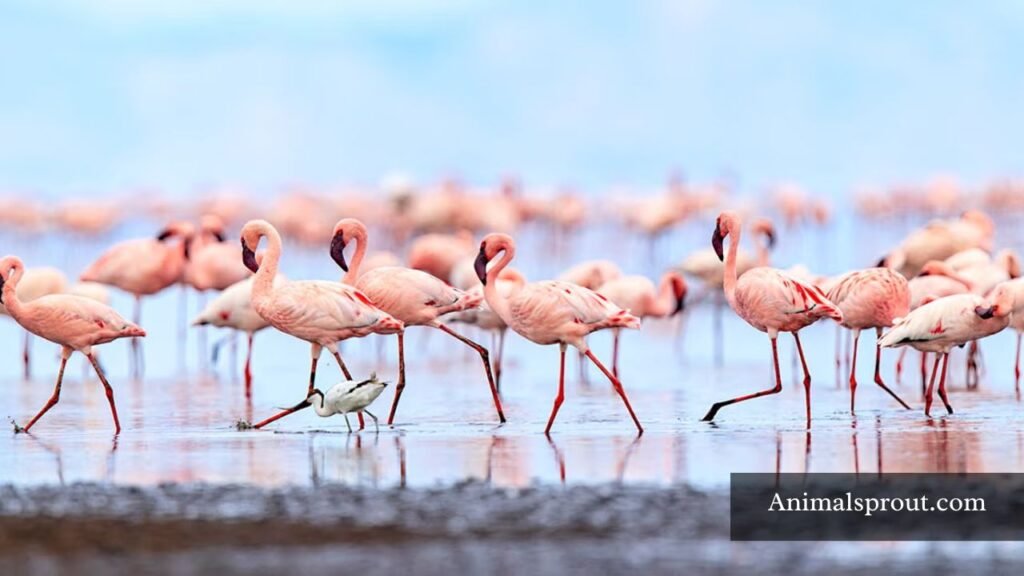
What’s fascinating is how these birds communicate within their flocks. They engage in a series of vocalizations and synchronized movements that not only strengthen social bonds but also establish hierarchies. Each colony has its own distinct culture, with variations in behavior and feeding patterns that reflect their environment. This adaptability and social cohesion are vital for survival, especially in harsh habitats like salt flats and lagoons where resources can be scarce. In essence, the flamingo’s vibrant community life is a testament to the power of collaboration in the animal kingdom.
Honeybees
Scientific Name: Apis mellifera
Class: Insecta
Diet: Herbivore
Honeybees are the epitome of teamwork in the animal kingdom. Living in highly organized colonies, these remarkable insects operate like a well-oiled machine, with each bee playing a specific role that contributes to the survival and efficiency of the hive. The queen, workers, and drones all have distinct functions, but it’s their communication — especially through pheromones and the famous “waggle dance” — that truly sets them apart. This dance not only conveys the location of nectar sources but also reinforces the colony’s unity and purpose.
What’s fascinating is how honeybees demonstrate collective intelligence. When faced with the challenge of relocating their hive, scout bees venture out to find new locations and then return to perform their waggle dance to recruit others. The colony collectively decides on the best site through a democratic process of consensus, showcasing a level of social cooperation rarely seen in the animal world.
Camels
Class: Mammalia
Diet: Herbivore
Camels, often referred to as the “ships of the desert,” exhibit fascinating social behaviors that highlight their adaptability and intelligence. While many envision these majestic creatures as solitary wanderers of arid landscapes, they are, in fact, quite social animals. Camels thrive in groups known as “herds,” which can range from a small family unit to larger aggregations of dozens. These herds provide not only safety from predators but also a network for social interactions that enhance their survival.
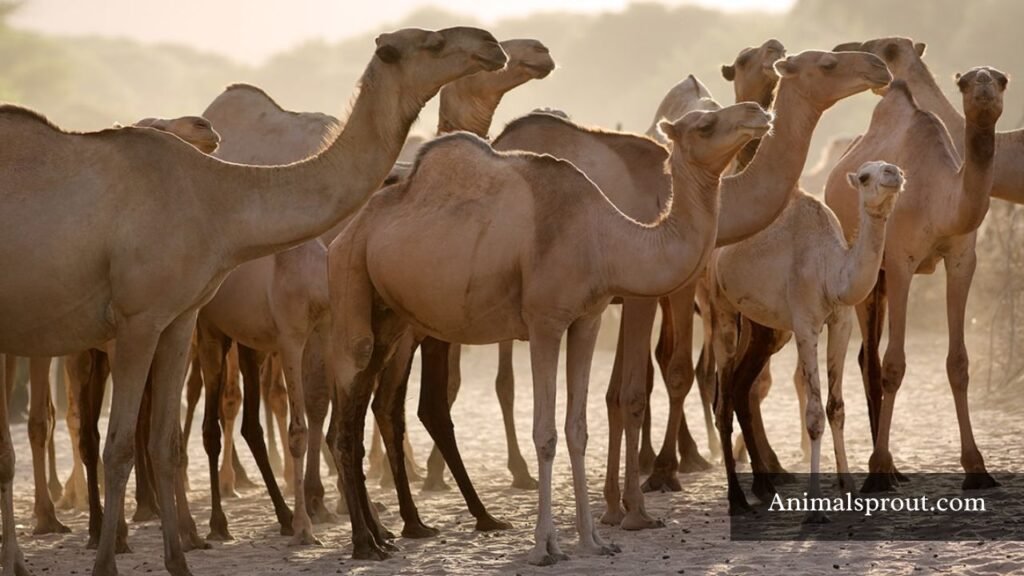
Interestingly, camels communicate using a rich array of vocalizations, body language, and even subtle facial expressions. This communication is crucial within the herd, especially when it comes to nurturing young camels or establishing social hierarchies. Moreover, studies suggest that camels possess strong bonds with one another, often forming lifelong friendships that extend beyond mere survival instincts.
Red Fox
Scientific Name: Vulpes vulpes
Class: Mammalia
Diet: Omnivore
Red foxes, often seen as solitary hunters, actually exhibit fascinating social structures when it comes to their family units. Typically, a red fox will form a family group consisting of a breeding pair and their offspring from the previous year. This unique social dynamic allows them to work together in raising young kits, sharing responsibilities like hunting and protecting their territory. Interestingly, the older siblings often play a crucial role in teaching the younger ones essential survival skills, showcasing a level of parental investment that is quite remarkable for wild animals.
In urban environments, red foxes adapt their group behaviors, demonstrating an impressive ability to thrive alongside human populations. These adaptable creatures can often be spotted foraging in parks or suburban areas, occasionally forming loose associations with other foxes to exploit food resources more effectively.
Gorillas
Scientific Name: Gorilla gorilla
Class: Mammalia
Diet: Herbivore
Gorillas are among the most fascinating social animals, living in cohesive family groups known as troops or bands. Typically led by a dominant male, often referred to as a silverback due to the distinctive silver hair that develops on their backs with age, these groups consist of multiple females and their offspring. The dynamics within a gorilla troop are intricate; each member plays a vital role, contributing to the overall harmony and survival of the group. Interestingly, these interactions extend beyond mere survival — gorillas engage in complex social behaviors, including grooming, play, and even expressions of empathy.
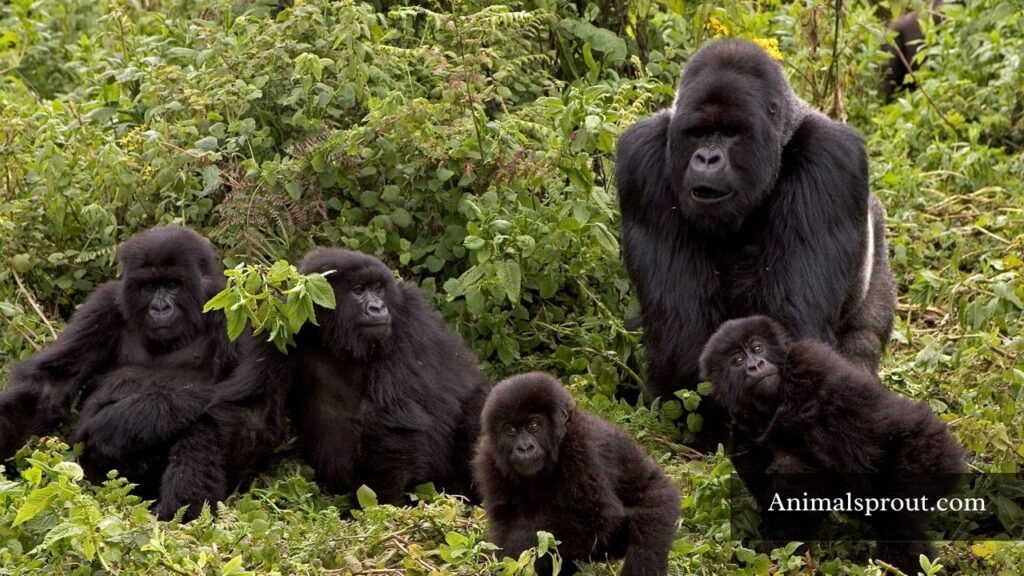
The bonds formed within a gorilla troop are profound, demonstrating emotional depth that rivals many human relationships. Mothers are especially nurturing, often seen carrying their young on their backs while teaching them essential survival skills. Recent studies suggest that gorillas exhibit a remarkable capacity for understanding each other’s emotions, responding to subtle cues and vocalizations. This emotional intelligence not only strengthens their social ties but also enhances their problem-solving abilities when faced with challenges.
Sardines
Scientific Name: Sardina pilchardus
Class: Actinopterygii
Diet: Omnivore
Sardines, often overlooked in the grand tapestry of marine life, embody the power of collective survival. These small fish form vast schools that can stretch for miles, creating mesmerizing underwater spectacles. This schooling behavior not only enhances their chances of evading predators but also optimizes their feeding efficiency, as they can quickly navigate to areas rich in plankton. The sheer density of a sardine school can confuse and deter larger fish, creating a dynamic defensive strategy that transforms individual vulnerability into a formidable communal strength.
Interestingly, sardines also exhibit a form of social communication within their schools. They are known to respond to changes in water currents and the movements of their companions with astonishing synchrony. This ability to coordinate their swimming patterns allows them to shift direction almost instantaneously, making it difficult for predators to target any single fish.
American Alligator
Scientific Name: Alligator mississippiensis
Class: Reptilia
Diet: Carnivore
American alligators, often seen as solitary predators, surprisingly exhibit fascinating social behaviors, particularly during specific seasons. In warmer months, these reptiles gather in groups known as “congregations.” These gatherings are not just for basking in the sun; they play a crucial role in their reproductive cycle. Mating rituals and territorial displays occur within these groups, showcasing a complex social structure that challenges the stereotype of the lone hunter.
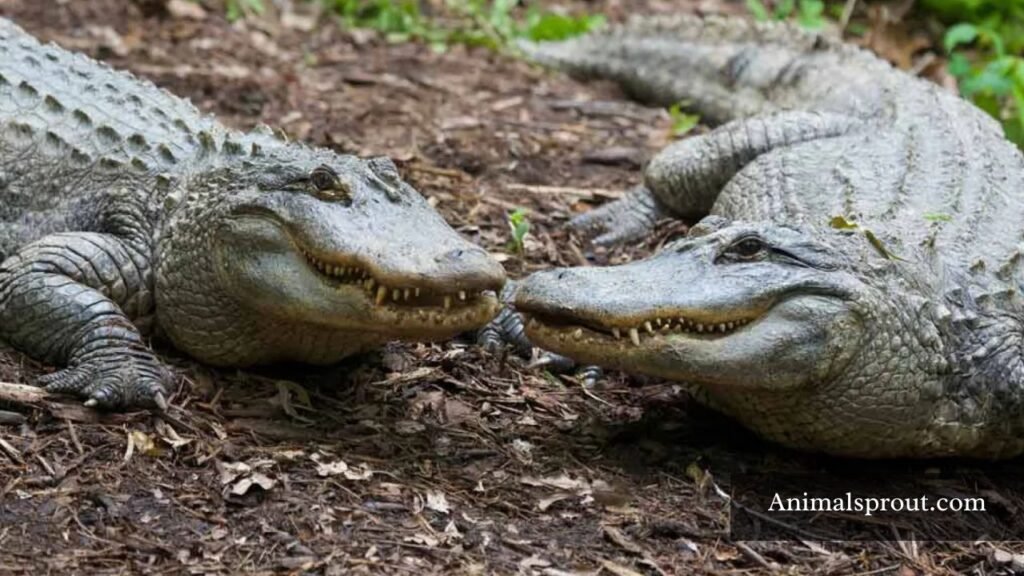
What’s more intriguing is the way alligators communicate within these groups. Through a series of vocalizations, body postures, and even physical contact, they convey everything from dominance to mating readiness. Mothers exhibit remarkable social behaviors too; they may gather their hatchlings into a protective cluster, demonstrating an unexpected level of parental care. This nurturing instinct emphasizes the importance of group dynamics in ensuring the survival of the young, reminding us that even the most formidable creatures have moments of vulnerability and connection.
Jellyfish
Scientific Name: Scyphozoa
Class: Scyphozoa
Diet: Carnivore
Jellyfish, often perceived as solitary drifters of the ocean, actually exhibit fascinating social behaviors that challenge this common misconception. Certain species, like the moon jellyfish, can form large aggregations, sometimes numbering in the thousands. These mesmerizing blooms create a stunning spectacle, transforming the water into a swirling tapestry of translucent bodies. The phenomenon isn’t merely for aesthetic appeal; it serves vital ecological purposes, such as enhancing reproductive success and increasing survival rates against predators.
Interestingly, these gatherings can also facilitate a unique form of communication. Recent studies suggest that jellyfish may use their pulsating movements and bioluminescence to signal to one another, coordinating their movements in a way that maximizes feeding efficiency and minimizes energy expenditure. This collective behavior underscores the complexity of jellyfish life, revealing that even the simplest organisms have evolved sophisticated strategies for survival in their vast underwater world.
Hippopotamuses
Scientific Name: Hippopotamus amphibius
Class: Mammalia
Diet: Herbivore
Found primarily in sub-Saharan Africa, these massive mammals form groups known as pods, which can consist of up to 30 individuals. This social structure is crucial for their survival; by living in close-knit groups, hippos benefit from enhanced protection against predators and increased social interactions that help maintain strong bonds within the pod. Interestingly, these pods are often led by a dominant male, who plays a pivotal role in establishing territory and ensuring the safety of his harem of females and their young.
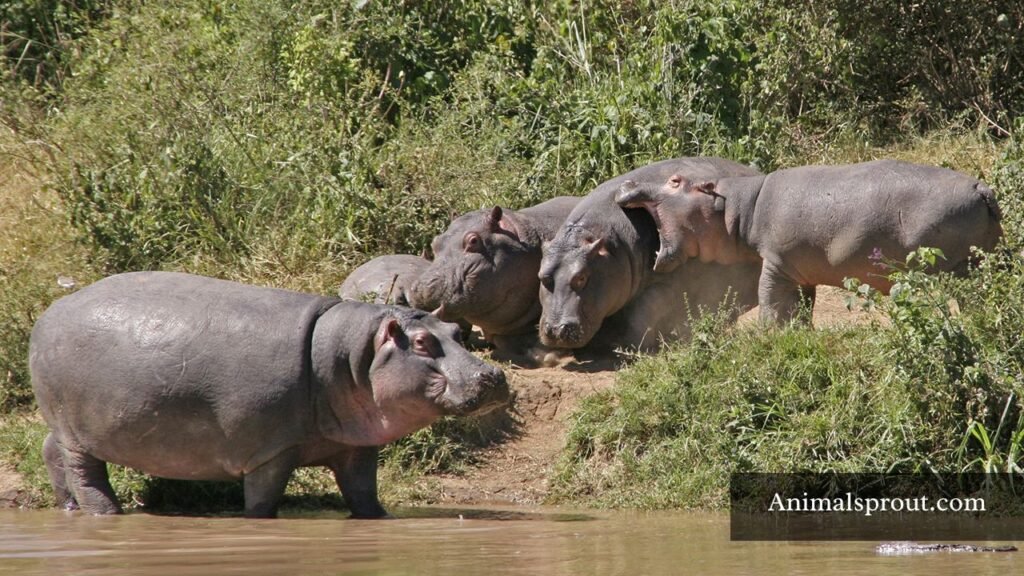
Beyond their protective instincts, hippos exhibit fascinating social behaviors that reflect their complex emotional lives. They engage in playful activities such as mock fighting and communal grooming, which not only strengthen relationships but also help to alleviate stress. The vocalizations they produce, ranging from grunts to wheezes, serve as a form of communication that reinforces social ties and enables them to coordinate group movements effectively. In the water, hippos are particularly graceful, navigating their aquatic environment with ease while relying on their companions for safety — a testament to the power of unity in the wild.
Killer whales
Scientific Name: Orcinus orca
Class: Mammalia
Diet: Carnivore
Killer whales, or orcas, are among the most social and intelligent animals in the ocean, living in complex family structures known as pods. These pods can consist of a matriarch, her offspring, and extended family members, often comprising several generations. This strong familial bond not only enhances their social interactions but also fosters cooperative hunting strategies that showcase their remarkable intelligence. For instance, orcas have been observed using sophisticated techniques like creating waves to wash seals off ice floes, demonstrating their ability to communicate and strategize collectively.
What sets killer whales apart is their unique dialects — each pod develops its own set of calls and whistles, akin to a regional accent in humans. This vocal distinction is crucial for maintaining cohesion within the pod and facilitating communication during hunts or social gatherings. Furthermore, these social structures provide emotional support; orcas are known to exhibit behaviors such as mourning their dead, displaying a depth of empathy that challenges our understanding of animal emotions.
Penguins
Scientific Name: Spheniscidae
Class: Aves
Diet: Carnivore
In the icy realms of Antarctica, penguins exemplify the power of social living. These flightless birds thrive in large colonies, often numbering in the thousands, where they engage in fascinating social behaviors that enhance their survival. One remarkable aspect of their communal life is the way they huddle together to withstand the brutal cold. This behavior not only conserves warmth but also fosters a sense of unity, showcasing how cooperation can be a vital adaptation in harsh environments.
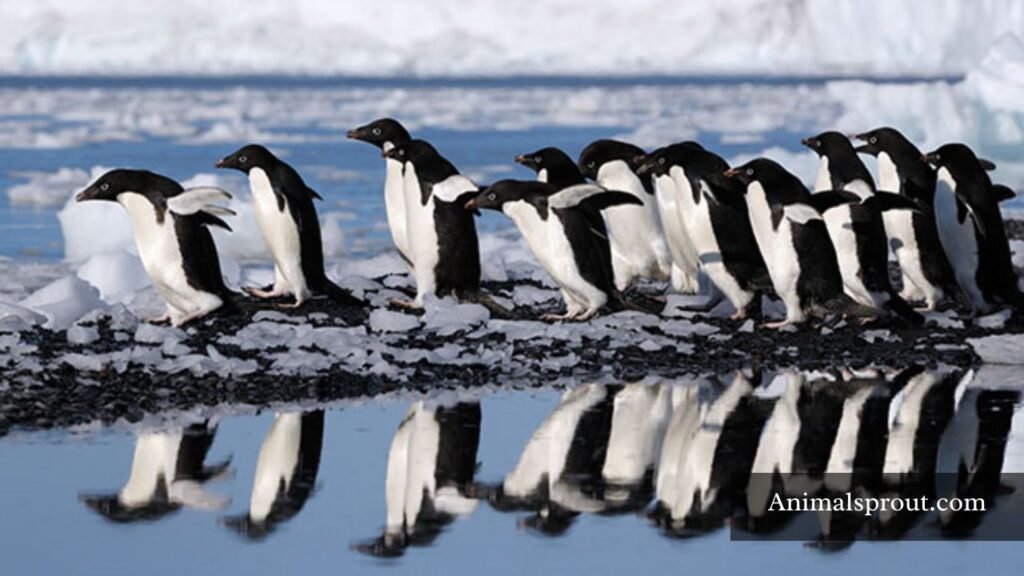
Beyond mere survival, the social dynamics of penguin colonies reveal complex communication methods. From elaborate courtship displays to synchronized swimming, these interactions are crucial for strengthening bonds within the group. Each species, whether it’s the Emperor or the Adélie, has its unique nuances; for example, Emperor penguins engage in vocalizations that help mates identify each other amidst the cacophony of bustling colonies.
Rats
Scientific Name: Rattus norvegicus
Class: Mammalia
Diet: Omnivore
Rats are often underestimated creatures, yet their social structures reveal a complex world of cooperation and communication. Living in groups, or colonies, these intelligent rodents exhibit fascinating behaviors that highlight their adaptability and resourcefulness. In their tight-knit communities, rats establish hierarchies, forming bonds that facilitate not just survival, but also social learning. They communicate through a range of vocalizations and body language, allowing them to coordinate foraging efforts and alert each other to potential threats.
Interestingly, the social dynamics of rat colonies extend beyond mere survival; they foster emotional connections akin to those seen in some primates. Rats engage in playful interactions and grooming behaviors that strengthen their bonds, reducing stress and enhancing their overall well-being. Research has shown that these social interactions can even influence problem-solving abilities, with groups of rats often outsmarting solitary ones by sharing information and strategies.
Giraffes
Scientific Name: Giraffa camelopardalis
Class: Mammalia
Diet: Herbivore
Giraffes, often celebrated for their towering stature and elegant necks, exhibit fascinating social behaviors that challenge the notion of solitary existence in the animal kingdom. Typically seen grazing peacefully in the savannah, these gentle giants form loose social structures known as “towers.” Unlike the rigid hierarchies observed in other herd animals, giraffe towers are fluid, with individuals frequently changing their companions. This flexibility allows them to maintain a diverse social network, which can enhance their survival chances by sharing information about food sources and potential threats.
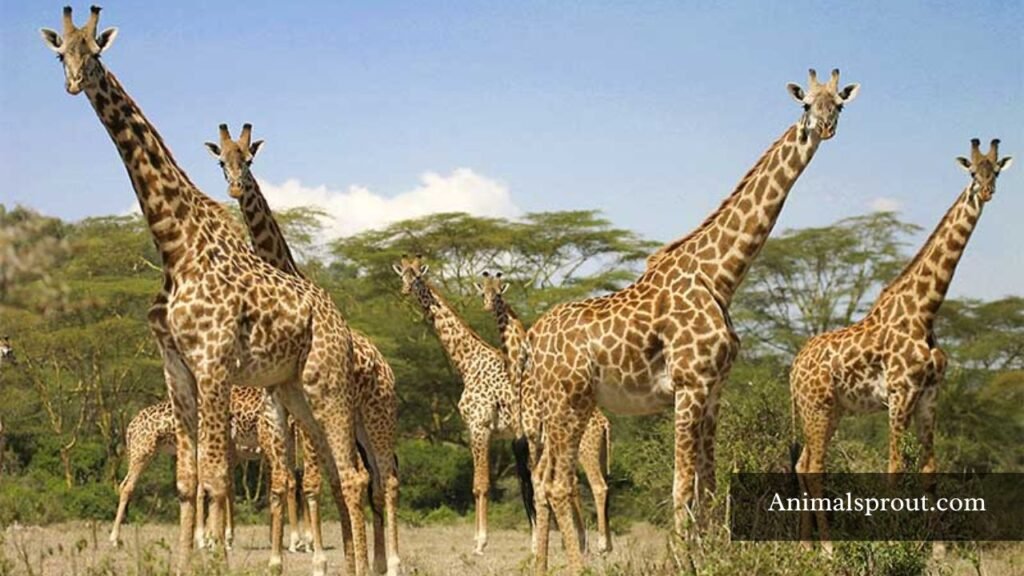
One intriguing aspect of giraffe social dynamics is their unique form of communication. Beyond the silent body language of neck movements and posture, recent studies suggest that giraffes may use low-frequency sounds to communicate over long distances. These subtle vocalizations, inaudible to human ears, could facilitate coordination among group members, especially when it comes to locating water or responding to predators.
Deer
Scientific Name: Cervidae
Class: Mammalia
Diet: Herbivore
Deer are often perceived as solitary grazers, but many species thrive in social structures that reveal a fascinating complexity to their behavior. For instance, whitetail deer are known to form matriarchal groups called “herds,” primarily composed of females and their young. This social dynamic not only offers protection against predators but also facilitates the sharing of knowledge, such as optimal feeding grounds and safe routes. The bonds formed within these herds can be surprisingly strong, with individuals displaying recognition and emotional responses to one another.
Interestingly, the social structures of deer vary significantly across species and regions. In areas with abundant resources, mule deer may gather in larger groups, while in harsher environments, they may remain more dispersed. This adaptability showcases their remarkable ability to navigate challenges collectively. Furthermore, during mating season, males may temporarily join herds to compete for mates, demonstrating that even in their typically solitary lives, social interactions play a crucial role in their reproductive success.
Prairie dogs
Scientific Name: Cynomys ludovicianus
Class: Mammalia
Diet: Herbivore
Prairie dogs, often overlooked in the animal kingdom, are fascinating social creatures that thrive in complex communities known as “towns.” These towns can span hundreds of acres and house thousands of individuals, creating a bustling metropolis beneath the surface. Their intricate burrow systems not only provide shelter but also serve as communication hubs where prairie dogs use a sophisticated system of vocalizations to alert others to predators or food sources. Each chirp and bark has specific meanings, demonstrating an impressive level of social interaction.
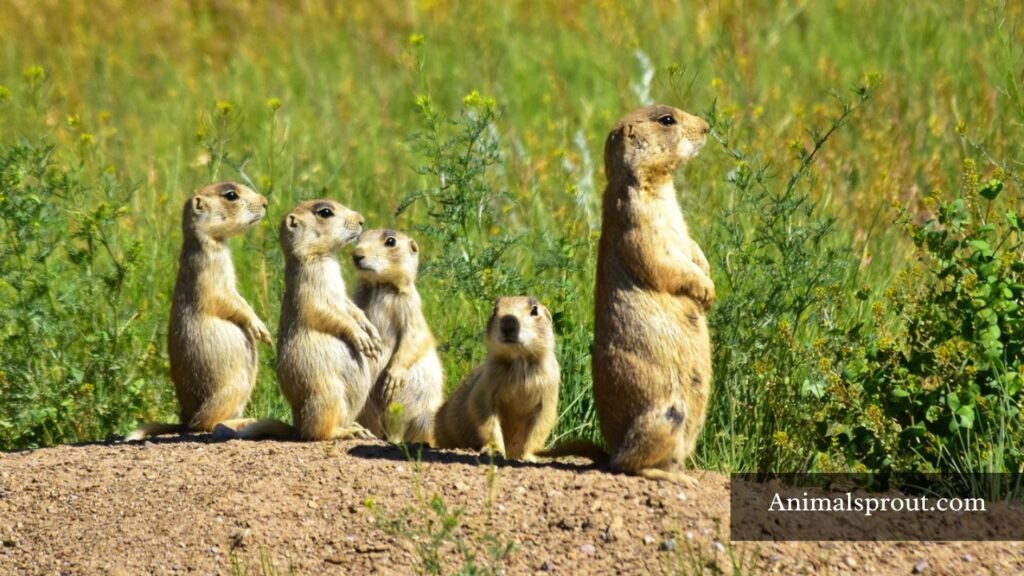
What truly sets prairie dogs apart is their strong sense of kinship and communal care. They engage in behaviors like grooming and babysitting, where adults take turns watching over the young while others forage for food. This cooperative lifestyle not only enhances their survival rates but fosters an unbreakable bond among members of the colony.
Readmore: Explore Top 12 Animals That Live in Fields.
Final Thoughts
Animals that live in groups exhibit remarkable behaviors and social structures that enhance their survival and well-being. From the complex hierarchies of wolf packs to the cooperative hunting strategies of lions, these species demonstrate the power of teamwork in the natural world. Group living not only provides protection from predators but also fosters social bonds and communication among members. Let us appreciate and protect these animals and their habitats, recognizing the importance of their collective existence in maintaining ecological balance.
FAQs
Why do animals stay in packs?
Animals stay in packs for several reasons, primarily centered around survival and efficiency. By forming groups, they can enhance their chances of finding food and protecting themselves from predators.
Do penguins live in groups?
Yes, penguins do live in groups, which are often referred to as colonies or rookeries. These social structures provide numerous benefits, including protection from predators and the harsh elements. By huddling together, penguins can conserve heat, especially during the frigid Antarctic winters.
